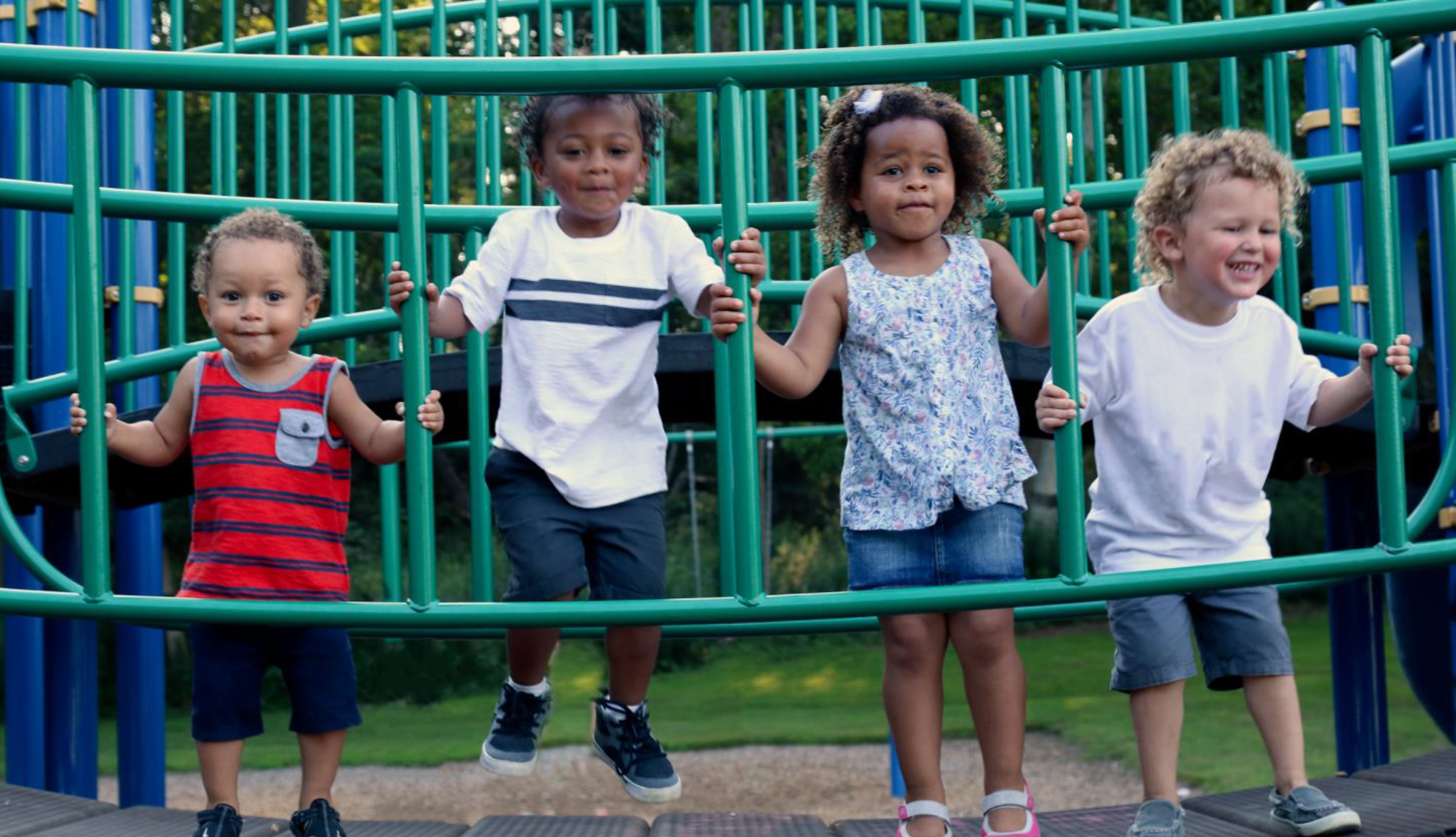Disproportionality and Equity
Articles
A Decade of Disproportionality: A State-Level Analysis of African American Students Enrolled in the Primary Disability Category of Speech or Language Impairment (2019)
~ Gregory C. Robinson and Pamela C. Norton
Addressing Disproportionality in the Identification of English Language Learners (ELLs) for Special Education Programs:
What Pre-Service Teachers Need to Know (2012)
~ Leah J. Lerma and Martha Lue Stewart
Grassroots 'EduColor' Group Spotlights Racial Inequities (2015)
~ Stephen Sawchuk
What is Critical Race Theory (CRT)? (2023)
~ Georgie Williams (Perlogo Knowledge Base)
Yale Study Probes the Complexity of Bias in Preschool (2016)
~ Christina Samuels
Reports and Publications
American Healing Racial Equity Resource Guide
MSAN Monthly April Resource Guide Sample (2017)
~ Minority Student Achievement Network (MSAN)
The Children Left Behind: A League Table of Inequality in Child Well-Being in the World's Rich Countries (2010)
~ UNICEF Innocenti Research Centre and Report Card 9
Distinguishing Difference from Disability: The Common Causes of Racial/Ethnic Disproportionality in Special Education (2010)
~ Edward Fergus | Equity Alliance
An Equity Lens for Early Warning Systems: Monthly Data Team Meetings
~ New York University - Steinhardt School of Culture, Education, and Human Development
Equity in Education- Volume 1
Addressing Racial/Ethnic Disproportionality in Special Education: Technical Assistance Manual for Identifying Root Causes (2009)
~ New York University - Steinhardt School of Culture, Education, and Human Development
Equity Starts Early: Addressing Racial Inequities in Child Care and Early Education Policy (2017)
~ Christine Johnson-Staub | CLASP
Fact Sheets: Economic Benefits of Reducing Racial and Ethnic Inequality (2015)
~ Center for American Progress
Helping to Ensure Equal Access to Education: Report to the President and Secretary of Education (2009)
~ U.S. Department of Education and Office of Civil Rights
Leading for Equity: Opportunities for State Education Chiefs (2017)
~ The Aspen Education and Society Program and The Council of Chief State School Officers
Race in the Heartland: Wisconsin’s Extreme Racial Disparity (2019)
~ COWS - University of Wisconsin - Madison
School Discipline Data Indicators: A Guide for Districts and Schools (2017)
~ National Center for Education Evaluation and Regional Assistance, Institute of Education Sciences, U.S. Department of Education
States Leading for Equity: Promising Practices Advancing the Equity Commitments (2018)
~ America's Promise Alliance, The Aspen Education and Society Program and The Council of Chief State School Officers
Teaching Resources
Disrupting Inequity: Having Brave Conversations About Bias Unbounded Toolkit (2017)
~ UnboundEd.org
MSAN Monthly April Resource Guide Sample (2017)
~ Minority Student Achievement Network (MSAN)
Reference and Resource Links
5 Things to Know About Racial and Ethnic Disparities in Special Education (2017)
~ Child Trends | Kristin Harper
Here’s a crash-course intro to disproportionality in special education and why it is so concerning.
65 Resources for Racial and Health Equity
~ Teach.com Powered by 2U
Black Men Matter – Examining Mental Health Issues Among Black Men – A Guide To Freedom
~ Drug Rehab USA
Black Youth Matters: Understanding Mental Health Issues among Black Teens
~ Better Addiction Care
Calculating Risk Ratio
~ Wisconsin PBIS Network
Investing in the Black Community
~ Bankrate
Bankrate created a resource that breaks down the best ways to find and invest in black-owned businesses. The options discussed will help those who are looking for ways to put their investment dollars to work while supporting racial justice.
Financial Literacy in the Black Community: Closing the Wealth Gap
~ annuity.org
The Metropolitan Center on Research and Equity and the Transformation of Schools
NYU Metro Center has developed an extensive library of tools and resources, which include books and publications for professional development, policy papers, and a cohort of other materials that address equity, achievement, and inclusive teaching and learning. This unique bank of resources also includes podcasts, webinars, and selected videos.
Racial Equity Glossary (2019)
~ racialequitytools.org
Racial Equity Hiring Guidelines
~ The Saint Paul Foundation and Minnesota Community Foundation
Organizations, Agencies, and Associations
The Charles A. Dana Center | The mission of the Charles A. Dana Center is to enable all students—especially those who are underserved—to achieve postsecondary success.
Council of Chief State School Officers (CCSSO) is a nonpartisan, nationwide, nonprofit organization of public officials who head departments of elementary and secondary education in the states, the District of Columbia, the Department of Defense Education Activity, the Bureau of Indian Education and the five U.S. extra-state jurisdictions.
Courageous Conversation (formerly Pacific Educational Group. P.E.G.)
Founded by Glenn E. Singleton in 1992, Pacific Educational Group is committed to achieving racial equity in education. We engage in sustained partnerships with educational organizations to transform beliefs, behaviors, and results so people of all races can achieve at their highest levels and live their most empowered and powerful lives. COURAGEOUS CONVERSATION™ is the award-winning protocol for effectively engaging, sustaining and deepening interracial dialogue. Through our Framework for Systemic Racial Equity Transformation, PEG is dedicated to helping educators address persistent racial disparities intentionally, explicitly, and comprehensively.
Disproportionality Technical Assistance Network (“The Network”)
The Disproportionality Technical Assistance Network, "the Network," is a multi-tiered system of compliance activities and improvement supports to address racial disproportionality in special education. The Network is funded through the Individuals with Disabilities Education Improvement Act, Part B. The Network is a Wisconsin collaboration among the Department of Public Instruction, cooperative education service agencies (CESAs), local education agencies, institutions of higher education, and community stakeholders.
Equity Alliance at ASU
The mission of Equity Alliance is to promote access, participation and positive outcomes for all students by engaging educational stakeholders, reframing and advancing the discourse on educational equity and transforming public education, locally, nationally and internationally.
Equal Justice Society is transforming the nation’s consciousness on race through law, social science, and the arts. Their legal strategy aims to broaden conceptions of present-day discrimination to include unconscious and structural bias by using social science, structural analysis, and real-life experience. EJS targets its advocacy efforts on school discipline, special education, and the school-to-prison pipeline, race-conscious remedies, and inequities in the criminal justice system.
Great Lakes Equity Center / Midwest & Plains Equity Assistance Center is one of ten regional Equity Assistance Centers (EACs) funded by the U.S. Department of Education. The Center provides technical assistance, resources, and professional learning opportunities related to equity, civil rights, and systemic school reform throughout our six-state region of Illinois, Indiana, Michigan, Minnesota, Ohio, and Wisconsin.
The Mid-Atlantic Equity Consortium (MAEC) was founded in 1991, as an education non-profit dedicated to increasing access to a high quality education for culturally, linguistically, and economically diverse learners. In its role as the Center, MAEC has collaborated with the U.S. Department of Education, the Office for Civil Rights, the Department of Justice, state departments of education, districts, and schools to ensure that students are treated equitably and are given access to a rigorous curriculum regardless of race, gender, national origin (English Language Learners), sexual orientation, or religious beliefs.
Rethinking Schools Schools began in 1986 as a local effort to address problems such as basal readers, standardized testing, and textbook-dominated curriculum. Since its founding, it has grown into a nationally prominent publisher of educational materials, with subscribers in all 50 states, all 10 Canadian provinces, and many other countries. Rethinking Schools is firmly committed to equity and to the vision that public education is central to the creation of a humane, caring, multiracial democracy. While writing for a broad audience, Rethinking Schools emphasizes problems facing urban schools, particularly issues of race.
Teaching Tolerance was founded in 1991 by the Southern Poverty Law Center and is dedicated to reducing prejudice, improving intergroup relations and supporting equitable school experiences for our nation's children. Teaching Tolerance provides free educational materials to teachers and other school practitioners in the U.S. and Canada. Our self-titled magazine is sent to 450,000 educators twice annually, and tens of thousands of educators use our free curricular kits.
Technical Assistance Center on Disproportionality at the Metropolitan Center for Research on Equity and the Transformation of Schools is contracted through the New York State Education Department (NYSED) Office of Special Education to develop, implement, and assess a process of providing comprehensive technical assistance and professional development trainings to New York State School Districts that are addressing issues of disproportionality.
Recommended Reading
Ability, Equity, and Culture: Sustaining Inclusive Urban Education Reform (2014)
~ Edited by Elizabeth Kozleski and Kathleen King Thorius
This comprehensive book is grounded in the authentic experiences of educators who have done, and continue to do, the messy everyday work of transformative school reform. The work of these contributors, in conjunction with research done under the aegis of the National Institute of Urban School Improvement (NIUSI), demonstrates how schools and classrooms can move from a deficit model to a culturally responsive model that works for all learners. To strengthen relationships between research and practice, chapters are coauthored by a practitioner/researcher team and include a case study of an authentic urban reform situation. This volume will help practitioners, reformers, and researchers make use of emerging knowledge and culturally responsive pedagogy to implement reforms that are more congruent with the strengths and needs of urban education contexts.
Beyond Resistance! Youth Activism and Community Change: New Democratic Possibilities for Practice and Policy for America's Youth (Critical Youth Studies) (2006)
~ Edited by Shawn Ginwright, Pedro Noguera, and Julio Cammarota
The failure of current policy to address important quality of life issues for urban youth remains a substantial barrier to civic participation, educational equity, and healthy adulthood. This volume brings together the work of leading urban youth scholars to highlight the detrimental impact of zero tolerance policies on young people’s educational experience and well being. Inspired by the conviction that urban youth have the right to more equitable educational and social resources and political representation, Beyond Resistance! offers new insights into how to increase the effectiveness of youth development and education programs, and how to create responsive youth policies at the local, state, and federal level.
Building Equity: Policies and Practices to Empower All Learners (2017)
~ Dominique Smith, Nancy Frey, Ian Pumpian, Douglas Fisher
Imagine a school with a diverse student body where every student feels safe and valued, and all students—regardless of race, culture, home language, sexual orientation, gender identity, academic history, and individual challenges—have the opportunity to succeed with challenging classes, projects, and activities. In this school, teachers notice and meet students' individual instructional needs and foster a harmonious and supportive environment—and students feel empowered to learn, to grow, and to pursue their dreams. This is the school all our students need and deserve. Built on the authors' own experiences and those of hundreds of educators throughout the United States, this book is filled with examples of policy initiatives and practices that support critical standards of equity and high-quality, inclusive learning experiences.
Culturally Responsive Teaching: Theory, Research, and Practice (Multicultural Education Series) (2010)
~ Geneva Gay
The achievement of students of color continues to be disproportionately low at all levels of education. More than ever, Geneva Gay’s foundational book on culturally responsive teaching is essential reading in addressing the needs of today’s diverse student population. Combining insights from multicultural education theory and research with real-life classroom stories, Gay demonstrates that all students will perform better on multiple measures of achievement when teaching is filtered through their own cultural experiences. This bestselling text has been extensively revised to include: expanded coverage of student ethnic groups; a new section on standards and diversity; new examples of culturally diverse curriculum content; more examples of programs and techniques that exemplify culturally responsive teaching; an emphasis on positive, action-driven possibilities in student–teacher relationships; and new material on culturally diverse communication, addressing common myths about language diversity and the effects of “English Plus” instruction.
Identity Safe Classrooms: Places to Belong and Learn (2013)
~ Dorothy M. Steele and Esther Rebecca (Becki) Cohn-Vargas
This book focuses on strategies that positively affect student learning and attachment to schooling, in spite of social inequalities. Research shows that students in identity safe classrooms learn better and like school more than peers in other classrooms. In identity safe classrooms, teachers strive to ensure that students (a) Feel their identity is an asset rather than a barrier to success (b) Experience diversity as a resource for learning; (c) Form positive relationships with fellow students and their teacher; (d) Learn in an environment with a challenging curriculum and high expectations; and (e) Develop a sense of belonging and empathy for others as they learn to use pro-social skills and practice cooperation.
Minority Students in Special and Gifted Education (2002)
~ Committee on Minority Representation in Special Education, National Research Council, Division of Behavioral and Social Sciences and Education, Cognitive, and Sensory Sciences Board on Behavioral, Christoper T. Cross (Editor), M. Suzanne Donovan (Editor)
Special education and gifted and talented programs were designed for children whose educational needs are not well met in regular classrooms. From their inceptions, these programs have had disproportionate representation of racial and ethnic minority students. What causes this disproportion? Is it a problem? Minority Students in Special and Gifted Education considers possible contributors to that disparity, including early biological and environmental influences and inequities in opportunities for preschool and K-12 education, as well as the possibilities of bias in the referral and assessment system that leads to placement in special programs. It examines the data on early childhood experience, on differences in educational opportunity, and on referral and placement. The book also considers whether disproportionate representation should be considered a problem. Do special education programs provide valuable educational services, or do they set students off on a path of lower educational expectations? Would students not now placed in gifted and talented programs benefit from raised expectations, more rigorous classes, and the gifted label, or would they suffer failure in classes for which they are unprepared? By examining this important problem in U.S. education and making recommendations for early intervention and general education, as well as for changes in referral and assessment processes, Minority Students in Special and Gifted Education will be an indispensable resource to educators throughout the nation, as well as to policy makers at all levels, from schools and school districts to the state and federal governments.
Other People's Children: Cultural Conflict in the Classroom (2006)
~ Lisa Delpit
Winner of an American Educational Studies Association Critics’ Choice Award and Choice Magazine’s Outstanding Academic Book Award, and voted one of Teacher Magazine’s “great books,” Other People’s Children has sold over 150,000 copies since its original hardcover publication. This anniversary paperback edition features a new introduction by Delpit as well as new framing essays by Herbert Kohl and Charles Payne. In a radical analysis of contemporary classrooms, MacArthur Award–winning author Lisa Delpit develops ideas about ways teachers can be better “cultural transmitters” in the classroom, where prejudice, stereotypes, and cultural assumptions breed ineffective education. Delpit suggests that many academic problems attributed to children of color are actually the result of miscommunication, as primarily white teachers and “other people’s children” struggle with the imbalance of power and the dynamics plaguing our system. A new classic among educators, Other People’s Children is a must-read for teachers, administrators, and parents striving to improve the quality of America’s education system.
Racial Inequity in Special Education (2002)
~ Daniel J. Losen and Gary Orfield (Editors)
An illuminating account of a widespread problem that has received little attention, Racial Inequity in Education sets the stage for a more fruitful discussion about special education and racial justice. Racial inequities pervade special education in U.S. schools today. Minority children—especially African Americans—are far more likely than white children to be designated mentally retarded or emotionally disturbed and therefore in need of special education. Even when appropriately placed in special education classes, minority children often receive poorer services than disabled white children. This book explores the inequities experienced by minority schoolchildren in special education. These issues are examined as problems in their own right, and as reflections of persistent racial inequities in our system of public education. Racial Inequity in Special Education describes the scope of these problems, and provides a comprehensive review of attempts by legislators, child advocates, and educational and civil rights enforcement agencies to address these complex issues. The authors outline essential areas for further research and dialogue.
Rethinking Our Classrooms: Teaching for Equity and Justice (2007)
~ Wayne Au, Stan Karp, Bill Bigelow, Bill Bigelow, Stan Karp
The original edition of Rethinking Our Classrooms, published in 1994, sold over 160,000 copies and has been used by teachers and teacher educators throughout the United States and the world. This new edition of the book, along with the most popular articles from the original edition, contains some of the best classroom writing we've published over the past five years, as well as completely updated resource sections and a new "Beyond the Classroom" chapter. There are new essays on science and environmental education, immigration and language, military recruitment, early childhood education, teaching about the world through mathematics, and gay and lesbian issues. Nowhere is the connection between critical teaching and effective classroom practice clearer or more accessible. A great resource for new and veteran K-12 teachers, as well as teacher education and staff development programs.
Rethinking Our Classrooms: Teaching For Equity and Justice - Volume 2 (2001)
~ Bill Bigelow
The new companion volume to the original Rethinking Our Classrooms is packed with compelling articles about teaching, as well as curriculum ideas, lesson plans, and resources, all grounded in the realities of the classroom. Like the bestselling first volume, Rethinking Our Classrooms, Volume 2 is an invaluable tool for educators striving to promote social justice and high-quality student learning.
Rethinking the Color Line: Readings in Race and Ethnicity (2014)
~ Charles A. Gallagher
User-friendly without sacrificing intellectual or theoretical rigor, this anthology of current research examines contemporary issues and explores new approaches to the study of race and ethnic relations. The featured readings effectively engage students by helping them understand theories and concepts. Active learning in the classroom is encouraged while providing relevance for students from all ethnic, cultural, and economic backgrounds. The fifth edition features ten new articles on such timely topics as: (a) The U.S. Census' changing definition of race and ethnicity' (b) Race-based disparities in health; (c) Racial and gender discrimination among racial minorities and women; (d) Being Arab and American; (e) How social control maintains racial inequality; (f) The increase in black and brown incarceration; (g) How racial bias may affect the use of DNA to locate suspects of crimes; (h) How derogatory ethnic and racial images are created and disseminated by the media; (i) The sexualization of African American women through the use of gender stereotypes; (j) The portrayal of light- and dark-skinned biracial characters
White Teachers / Diverse Classrooms: Creating Inclusive Schools, Building on Students’ Diversity, and Providing True Educational Equity (2011)
~ Julie Landsman and Chance W. Lewis
The point of departure for this new edition, as it was for the first, is the unacceptable reality that, for students of color, school is often not a place to learn but a place of low expectations and failure. In urban schools with concentrations of poverty, often fewer than half the ninth graders leave with a high school diploma. This second edition has been considerably expanded with chapters that illuminate the Asian American, Native American, and Latina/o experience, including that of undocumented students, in our schools. These chapters offer insights into the concerns and issues students bring to the classroom. They also convey the importance for teachers, as they accept difference and develop cultural sensitivity, to see their students as individuals, and avoid generalizations. This need to go beneath the surface is reinforced by a chapter on adopted children, children of mixed race, and “hidden minorities”. White and Black teachers, and teachers of different races and ethnicities, here provide the essential theoretical background, and share their experiences and the approaches they have developed, to create the conditions – in both urban and suburban settings – that enable minority students to succeed. This book encourages reflection and self-examination, and calls for recognizing and reinforcing students’ ability to achieve. It also calls for high expectations for both teachers and students. It demonstrates what it means to recognize often-unconscious biases, confront institutional racism where it occurs, surmount stereotyping, adopt culturally relevant teaching, connect with parents and the community, and integrate diversity in all activities.
Why Are So Many Minority Students in Special Education?: Understanding Race & Disability in Schools (2014)
~ Beth Harry and Janette Klingner
The second edition of this powerful book examines the disproportionate placement of Black and Hispanic students in special education. The authors present compelling, research-based stories representing the range of experiences faced by culturally and linguistically diverse students who fall in the liminal shadow of perceived disability. They examine the children's experiences, their families' interactions with school personnel, the teachers' and schools' estimation of the children and their families, and the school climate that influences decisions about referrals to special education. Based on the authors' 4 years of ethnographic research in a large, culturally diverse school district, the book concludes with recommendations for improving educational practice, teacher training, and policy renewal.




























